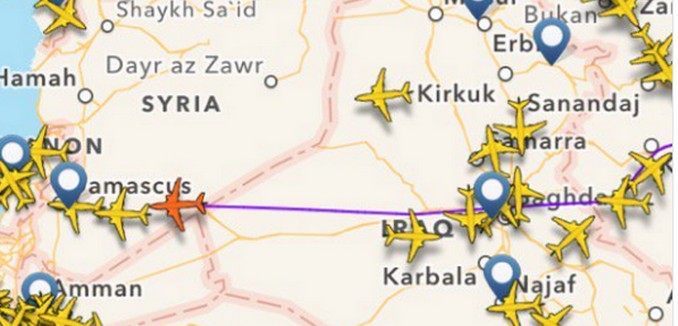The United States Treasury Department has approved licenses for Boeing and Airbus to export planes to Iran, even as the Islamic Republic continues to fly troops and arms to Syria, Reuters reported Wednesday.
The granting of the licenses, according to Reuters, marks the elimination of a “key hurdle” allowing Iran Air, the national carrier, to purchase or lease 200 planes, allowing Tehran to “help modernize and expand the country’s elderly fleet, held together by smuggled or improvised parts after years of sanctions.” The payment process could still be difficult, as Iran is largely blocked from the international financial system due to ongoing concerns about its money laundering and terror financing.
In other words, U.S advances Iran's arms shipments to Assad via aircrafts to wipe out more Syrian civilians. Sigh… https://t.co/Pdimh2wpd6
— Benjamin Weinthal (@BenWeinthal) September 21, 2016
Emanuele Ottolenghi, a senior fellow at the Foundation for Defense of Democracies, wrote in The Hill last week that Iran Air’s additional planes would likely be used to continue ferrying troops and arms to Syria in support of the Bashar al-Assad regime.
Iran Air flight 697 from Tehran 2 Damascus is actually landing in Abadan, the #IRGC logistical hub 4 Syria airlift pic.twitter.com/uDfZm3W7yU
— Emanuele Ottolenghi (@eottolenghi) September 8, 2016
In one instance earlier this month, an Iran Air flight from Tehran to Damascus initially flew south instead of west in order to make a mysterious layover in the city of Abadan. Ottolenghi described Abadan as the “principal logistics hub for the [Islamic Revolutionary Guard Corps] airlift in support of Syria’s loyalist armed forces and the Shiite militias.”
“Flight records show that Iran Air’s flight 697 — the Tehran-Damascus route — was operated 66 times over the last year, including three times from Abadan, on Sept. 8, June 9 and May 10. There were at least an additional 20 Iran Air flights to Damascus between Dec. 14, 2015, and the end of August 2016. Not all originated in Tehran, however,” Ottolenghi added.
“Many of these flights switched off their transponders above the western Iraqi desert, and in some cases, for part of their journey in Iranian airspace. Moreover, in the abovementioned cases, the flight number’s associated route did not match the actual plane’s journey. These practices are illegal under international civil aviation rules, and also reveal the intention to conceal the aircraft itinerary and likely its cargo,” he wrote.
Iran Air has tangibly benefited from last year’s nuclear deal: It was removed from a list of companies sanctioned by the Treasury for its past involvement in nuclear proliferation activities and flying “missile or rocket components” to Syria. In June, the airline flew known weapons resupply routes to Syria three times. A Western intelligence report seen by Reuters in 2012 noted that Iran continued using civilian aircraft to transport large amounts of arms and personnel to aid Assad.
By continuing activities for which it was previously sanctioned, Iran Air—and possibly Western suppliers—risk falling under sanctions again.
Participating in the Syria airlift could jeopardize all of this. Under the JCPOA, Washington cannot reimpose nuclear sanctions against entities that have been removed from the sanctions list. But it can slap terrorism sanctions against any of them if they were demonstrably involved in activities covered by Executive Order 13224.
Ottolenghi called it “disconcerting” that the White House has ignored evidence of Iran Air’s support for the Assad regime and allowed Boeing to continue its negotiations with Iran. Ottolenghi concluded by calling on the next president to sanction Iran Air “for its role in perpetuating and exacerbating the Syrian civil war.”
[Photo: Twitter ]




